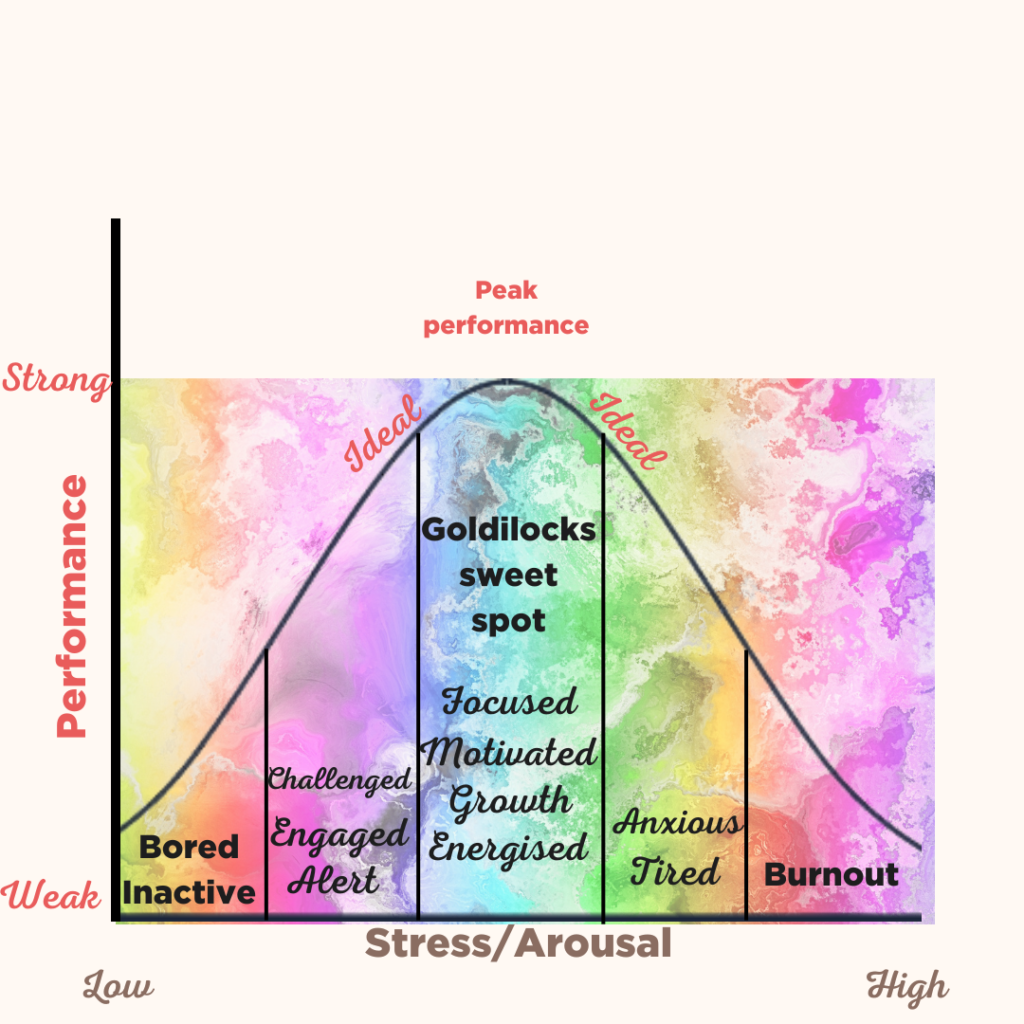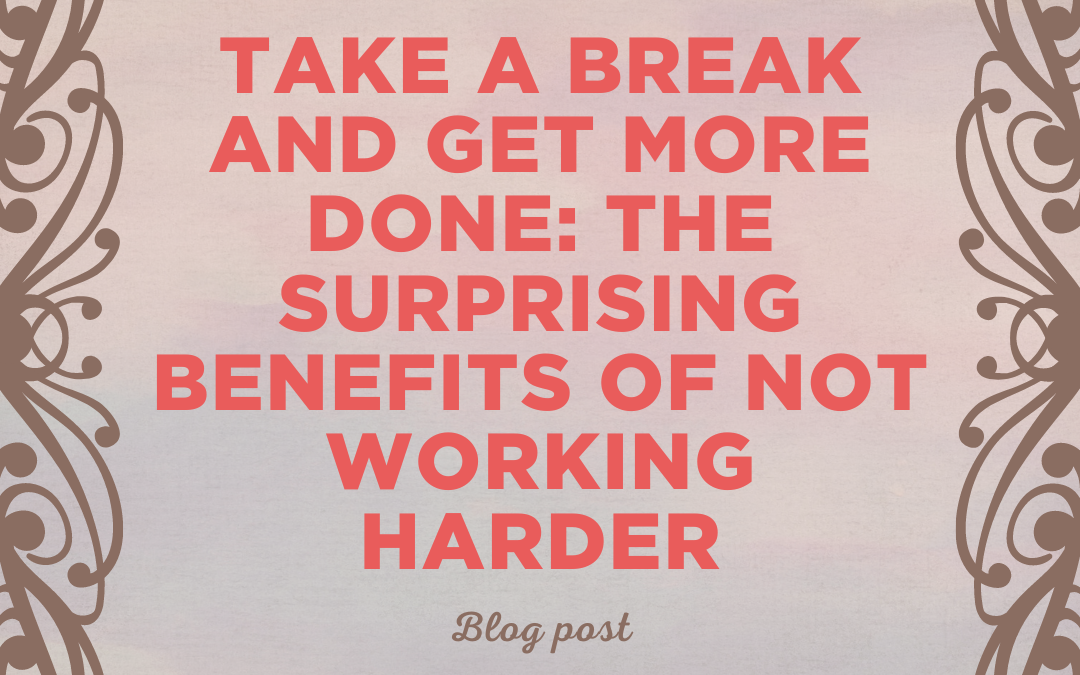When we look at this bell shaped curve of performance we can see that our sweet spot for performance is in the middle. This is where we will get more done. It’s where we are challenged and pushed but not too much and this is where we perform at our best. It’s all about the balance.

Why it doesn’t help to work too much.
When we are pushed to work too much and for too long we reach that tipping point where we become over worked, stressed and subsequently slower at the work we are trying to achieve. We are functioning outside of the middle of the curve and therefore our functioning is significantly slowed down.
It’s like a vicious circle here. We often feel that working more will help us to feel less stressed, more in control and get more done. But that’s not true working more makes us more tired, stressed, run down. Our work becomes lower in quality, and in quantity. We can feel like we are chasing our tails and never catching up. And what we then will often do is throw more time and say that we will work longer and harder.
The problem isn’t really the time that we are working. It’s the quality of the work that we are producing in the time that is available for us.
Whilst it may sound contradictory, busyness can also be a sign of low productivity. Busy people are generally less productive than their more modest counterparts. Passionate workaholics also tend to be less happy and less healthy in the long term. This could ultimately lead to burnout and worse productivity.
Researchers from Stanford University found that people who work more than 40 hours per week are less happy and productive than those who work fewer hours. The study was conducted by analyzing data from more than 250 different surveys covering over 100 countries and regions. That’s a lot of data!!
So developing this understanding can help us recognise those unhealthy patterns in our lives.
What can you do to get more done?
So ask yourself, what can you do to slow things down? To recharge your batteries? To keep you in the sweet performance spot smack in the middle of the bell shaped curve? What can you do to help yourself get more done?
It’s not about the big things, the holidays, the spa days although they are really important. It’s often the little things that can make a difference. Some ideas could be
- Scheduling a lunch break.
- Having 10 minutes “me time” in the day when you do something for yourself.
- Having bookends to your day, a designated activity that you do in a symbolic way to start and end your day such as a brief meditation or a gratitude practice.
- Take a break in the day. Go and fill up your water bottle and do some deep breathing whilst you are there.
- If you are in a shared office maybe volunteer to make the drinks and that will give you a change of scenery.
All these subtle little changes can help you slow down. You can be more efficient. Overworking is not going to help you achieve your goals faster.
Interested in working more deeply with me?

Hi, I am Dr Hannah Bryan, thanks for reading my blog.
I am a Chartered Clinical Psychologist and a Europe Accredited EMDR Facilitator and Consultant.
I have over 20 years experience in both the NHS and private practice.
Like you, I am only human and I have had my hard times. I have got many blocking beliefs that at times hold me back from me realising my potential and being my best.
EMDR incorporated with coaching has helped me work things through and be in a position now where I have a thriving and inspiring psychology practice. It’s always a journey and I’m always working on my blocks, my mental health and my well being.
As well as coaching, I also provide psychological therapy and support other therapists training in EMDR. I am a Facilitator on training courses and offer specific supervision packages and training to support this. Click here to book a free 15 minute coffee chat with me to see if I can be of help to you.


Recent Comments